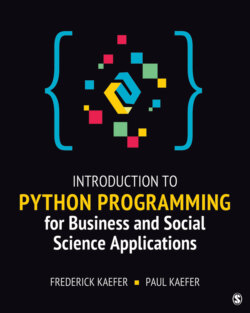Читать книгу Introduction to Python Programming for Business and Social Science Applications - Frederick Kaefer - Страница 15
На сайте Литреса книга снята с продажи.
Brief Introduction to Python and Programming
ОглавлениеGuido van Rossum first conceived the Python programming language in December 1989 with the idea that it should be easy to read and that it should let users create their own packages of special-purpose coding modules that others could use (Anonymous, 2018). Python’s first release was in 1991, and it combines simple syntax, abundant online resources, and a rich ecosystem of scientifically focused toolkits with a heavy emphasis on community (Perkel, 2015). Syntax is a set of rules that dictate how to specify instructions in a programming language. Packages are libraries of code modules that other programming code can access and use. As of January 2020, there are more than 212,000 projects with packages available for download from the Python Package Index (PyPI), a repository of packages for the Python programming language (Python Software Foundation, 2020). In addition, Python was the most popular introductory language at American universities in 2014, but the teaching of it is generally limited to those studying science, technology, engineering, and mathematics (Anonymous, 2018). The intended audience for this textbook is students and researchers in business and the social sciences. There is prolific use of Python today in both business and the social sciences to develop applications for data analytics. In addition to statistical analysis, we can use Python for web scraping, text mining, machine learning, and developing applications with graphical user interfaces (all of which we cover in this book). Although we can accomplish each of these individually with other programming languages (such as R) and software packages (such as SAS and Tableau), learning Python enables you do all these things and much more.
